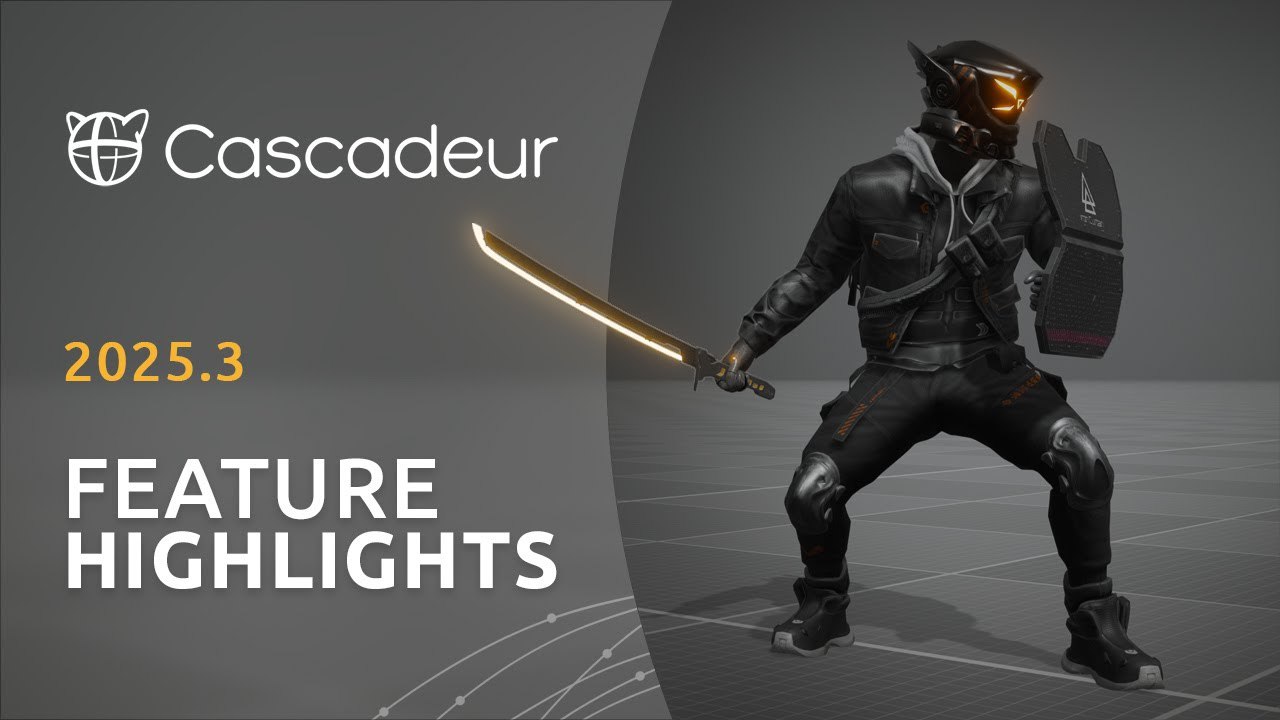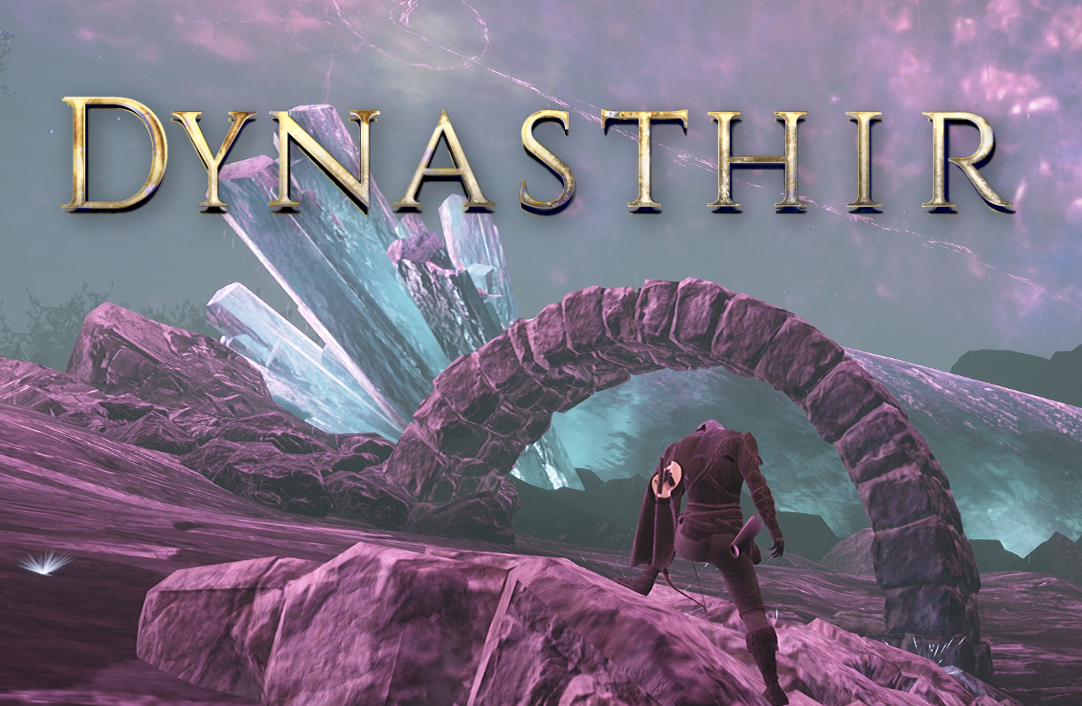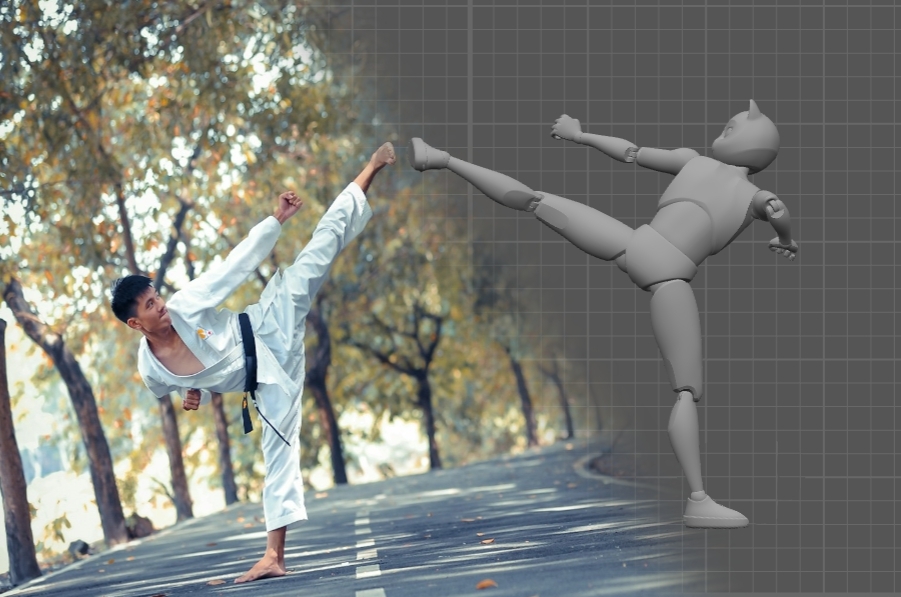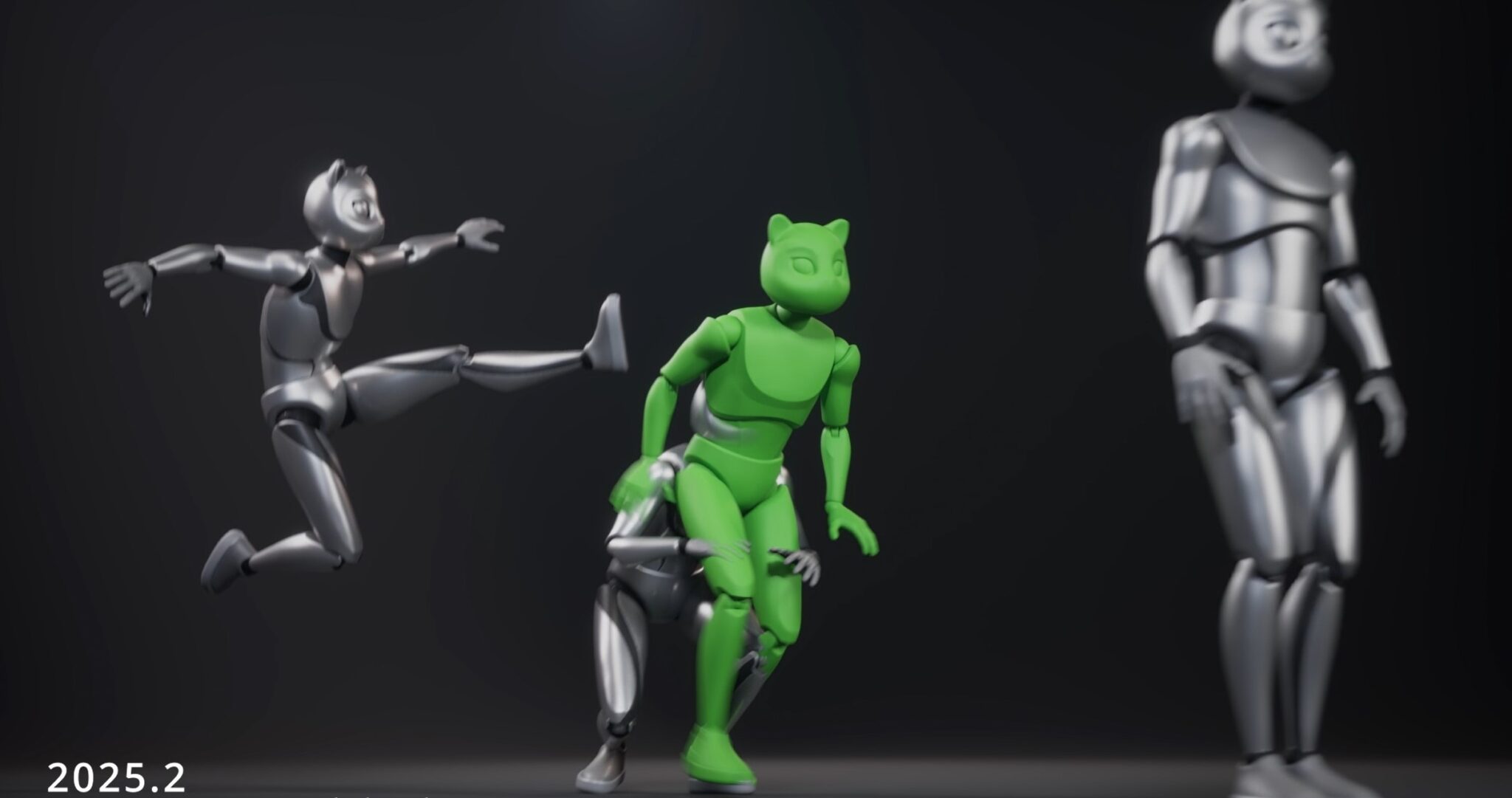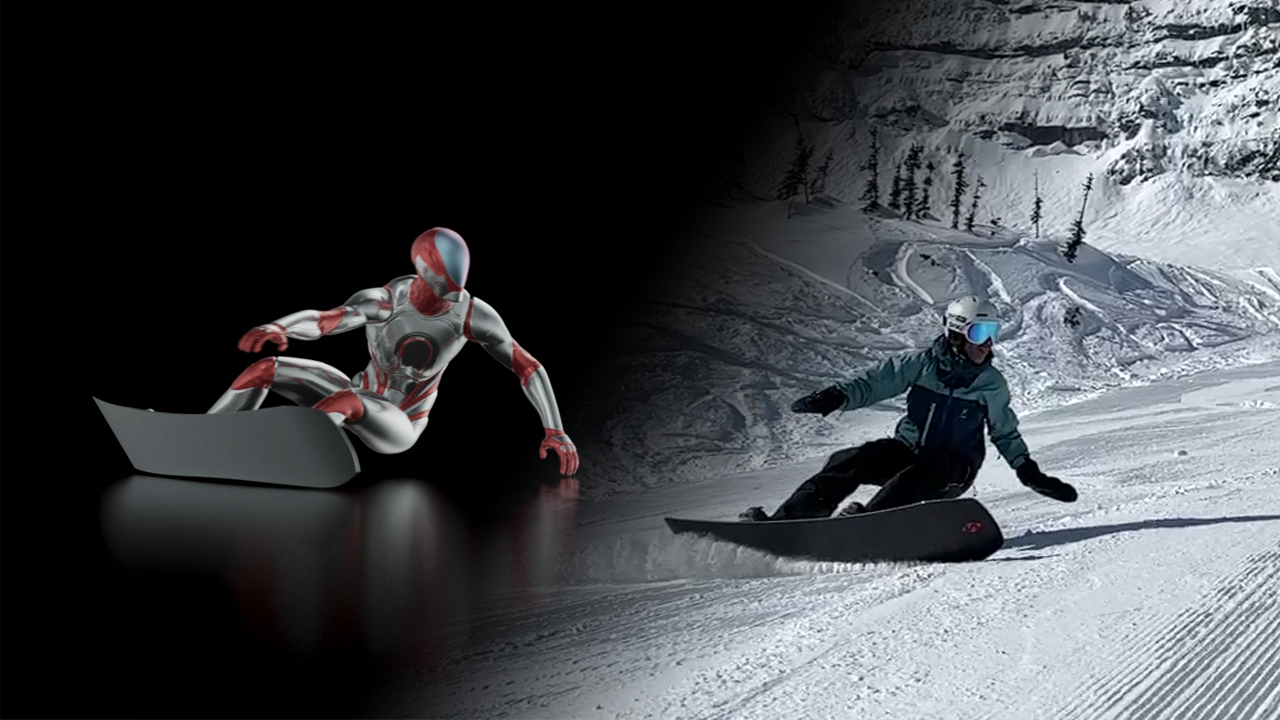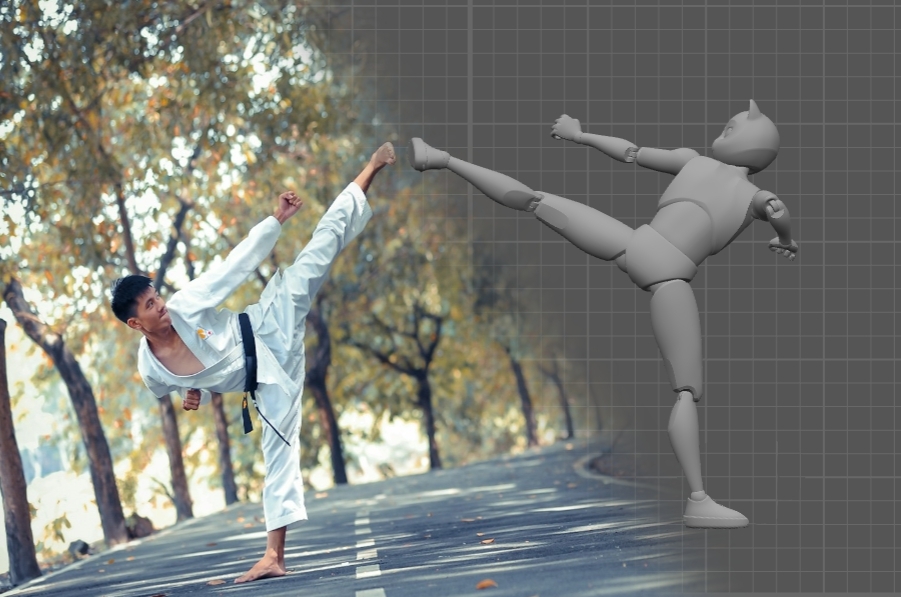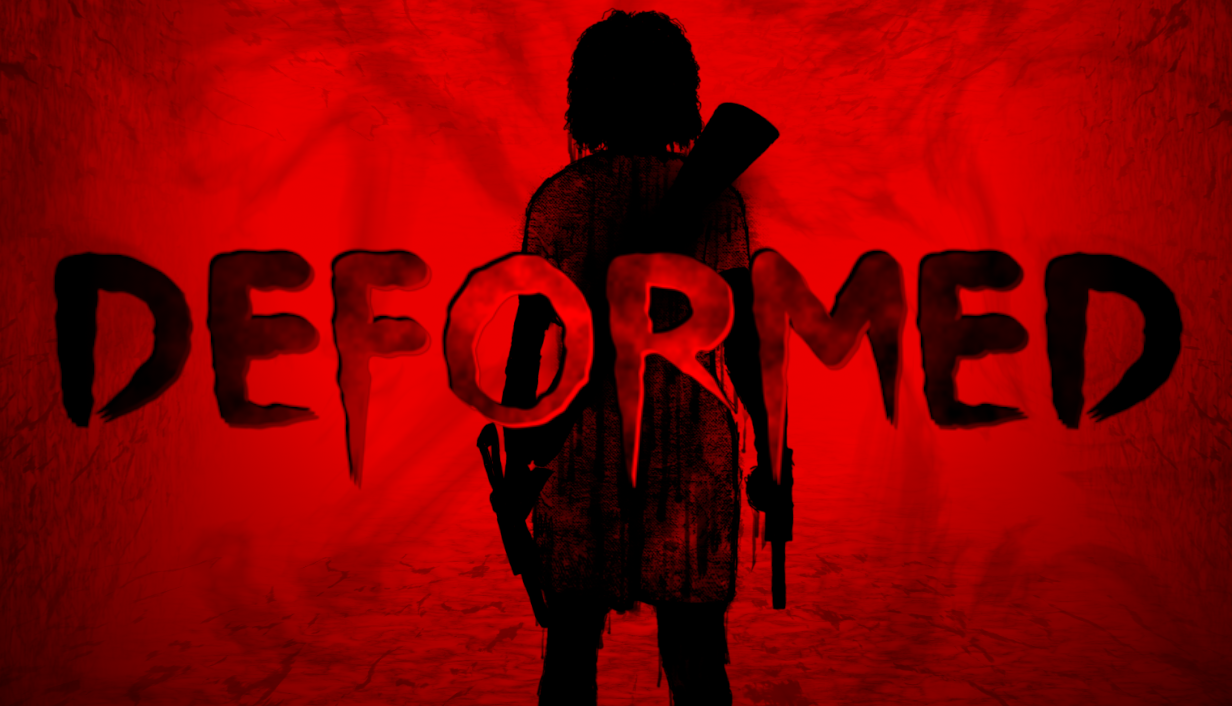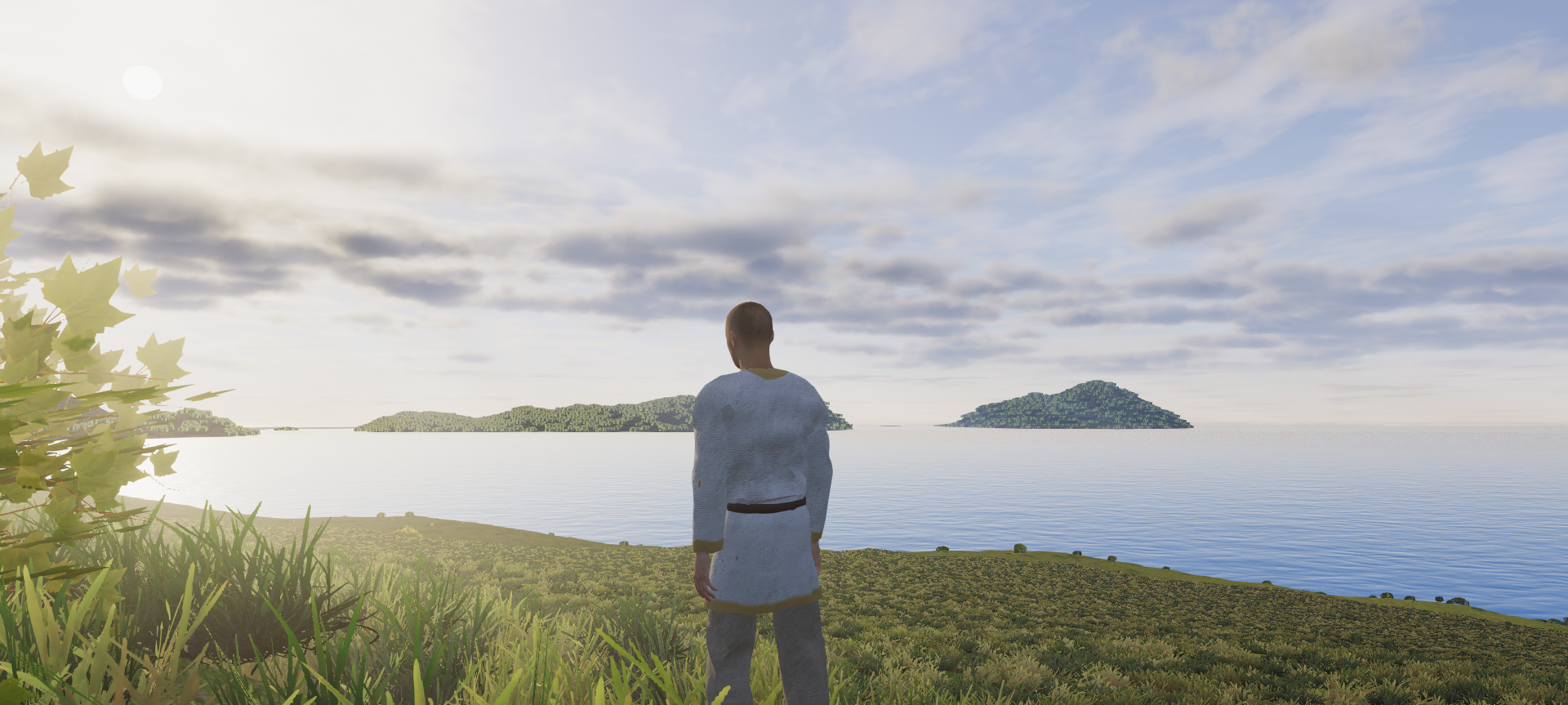
Although Cascadeur is not scheduled for completion until 2022, there are already a large number of developers using the Early Access version for real game development. We regularily meet talented young people on Twitter, Youtube or in our Discord channel who showcase realistic animations they created with our physics-based 3D character animation software.
We recently introduced one of these indie talents and his project in the blog post "Making an Animation for a 3D Pixel Art Game". Today’s post continues this interview series and introduces you to the Spanish game creator Jesús and his indie game "Project Destiny".
Jesús has been an active member of our Discord community for quite some time, and regularly posts samples from Project Destiny there, under his nickname "Mist Realms". Since we really like his showcased character animations, and the open-world RPG concept of his game looks also very promising, we asked him for this interview.

"Project Destiny" (Working title) shines with gorgeous landscapes. Both the music and the landscapes in the indie game are procedurally generated.
Cascadeur: Hello Jesús! Would you like to tell us more details about yourself as a person and your career as a game developer so far?
Jesús: First of all, thank you for your interest in my project and having me for this interview. My name is Jesús and I live in Murcia, Spain. I don't really have a degree or specific studies in video game development. I studied computer science at the University of Murcia and there was nothing about game dev except some optional courses. Although I learned programming there, and that helped me a lot to get into this world, there were many things I had to learn, and some to forget.
Cascadeur: Which games do you like to play yourself, and which titles inspired you to create your game?
Jesús: I have been playing video games since I was a toddler; the first memory of a video game that comes to my mind is this image of me sitting on my mother's lap while we played Gobliiins on her Atari ST. So I played all kinds of genres, but I would say my favourite ones have always been RPG and strategy. There are many titles that have influenced me to create this project, lots of mechanics from different games that I want to implement. And although many people think that I am creating a Minecraft clone, the light that guides my inspiration is Dwarf Fortress. We could summarize that my game is something similar to the adventure mode of Dwarf Fortress but in 3D and with more features. Also, another game that may have similarities with this project would be The Guild saga.
Cascadeur: Your nickname is “Mist Realms” - is this the name of your company, or is it a working title for your game?
Jesús: Mist Realms is the name of the company under which I will publish the game. The game project itself has two possible names, but I will keep them a secret for now. Only a few people know the names I have in mind for it, just family and friends. However, I have a codename that I use for the game: “Project Destiny”.

Gigantic in size: The main character of Project Destiny will be able to run for days in one direction through the open world.
Cascadeur: Okay, so we'll call it that from now on. Is Project Destiny your first own project, or have you developed other games before?
Jesús: Yes, this game is my first official project, but it is not the first game I have developed. My first experience with game dev was with the game Forgotten Realms: Unlimited Adventures, I spent many hours as a kid creating modules which afterward my older brother would play. Then came RPG Maker. I am very fond of this engine because I played with it for many years. Unfortunately there are no results to show because I had this project that I was redoing over and over again, like Charles Babbage with his machine, improving it as I learned more about the program and from other RPG Maker users. That game grew up with me and I with it, but it was never finished except on paper. Finally, Unity 3D arrived, the engine that I am working with now and I have settled. As a curious fact, I started in Unity 3D thinking about redoing and starting from scratch, for the last time, the game I was creating in RPG Maker, but with the power and freedom that Unity brought I gave up this idea and started my current project.
Cascadeur: In other words, Project Destiny is your first serious game development. That's hard to believe - given the impressive video clips you've posted so far. Aren’t there any other game developments of bigger teams that have you been involved in so far?
Jesús: Until recently I had not worked on other projects except mine, but currently I am working on a project for which I was hired and whose development will take approximately a year, until next summer. It is called eMurcia 2020 and it is an online virtual trade fair, basically companies will be able to create their own stands and users will access these virtual fairs from anywhere in the world. We are not a large team, currently we are two people in the Unity 3D department, but there are other teams involved in charge of the servers and databases. This project takes away a lot of time from me, so I can only work in the little free time that I get. Therefore, until I finish this other project I will be progressing quite slowly on mine.

For the design of the medieval weapons, the developer takes inspiration from medieval German sketches.
Cascadeur: To be honest, it's not easy for us to categorize your project. On Twitter you write that Project Destiny will be an open-world sandbox RPG with a procedurally generated world and turn-based combat. But you also called it a Medieval Life Simulator with social components like in The Sims. Can you describe the game principle, the setting and the background story in a bit more detail?
Jesús: I know it is not clear since I have not shown much gameplay, it seems like a technical demo rather than a game. It is difficult to explain because there is an aspect of the game that I have not shown yet, and it is really the soul of the game. I think that is what will differentiate my game from other video games. I have not shown it yet because it is still in development; it is working for small worlds but requires very complex and delicate optimization to offer the same on larger worlds.
This game consists of living the life of your character in a generated medieval world, which is why it is an open and procedural world. In this world there will be other NPCs living their lives, you can interact with them and have some kind of relationship, that is why it is like "The Sims". When time passes, both you and the NPCs will grow old and die, giving way to another generation of people who will inhabit the world. What will you do during the life of your character? It depends on you.
On the other hand, the combat is based on a system that my brother and I have designed together with the group with whom we play tabletop role-playing games. This system is very realistic and deadly, taking real medieval fencing as a reference, and trying to transfer as faithfully as possible the chaos of real combat to a turn-based system. This system, of which we also want to release a rulebook that my brother is designing, is what my game will use.
Cascadeur: So you have designed the combat system along with your brother? That’s cool! Do you have any other team members, or are you just developing and publishing the game as a lone wolf?
Jesús: That is right, I have been developing this game for many years by myself. But there are things that I do not know how to do, for example I will have to hire a shader programmer because it is not my area of expertise and it would take me a long time to get good results. Some premade assets save me a lot of work, too, like the clouds or the vegetation packs that I bought from Unity Asset Store. The 3D models are from DAZ Studio, since they have blendshapes that I use to make each character different and unique. Then the procedural music was created in collaboration with Marma Music.
Regarding publishing, I think that those of us who dedicate ourselves to creating, whether it is writing, painting, playing music... or in this case creating video games, are very lucky to live in this time. There are many social networks where we can make ourselves known and get followers, and many other platforms where people can support us directly such as Patreon or Kickstarter. I can even self-publish on Steam and other similar platforms. You can dedicate yourself to create what you dream of, without having to go through company filters. Although I recognize that it is difficult to stand out from all the noise, I really believe that with work, constancy, and dedication, in the end you will make yourself noticed.

Family business: For various battle animation, the developer's brother takes on the role of the swordsman. The filmed scene can then be easily integrated into Cascadeur as a "video reference".
Cascadeur: That’s true! You've been working on the game since 2016. How many hours of work have you already put into the development of Project Destiny so far?
Jesús: To be exact, it all started at Christmas 2014, but during those first two years I worked on it only in my spare time while finishing college. It was not until the summer of 2016 that I finished my degree and was able to dedicate myself entirely to the game. It would be impossible for me to divide and specify how I have distributed the time in the different areas of the game, but I can say that I have worked 12 and 14 hours every day, weekends included, several times during these years. This is something I wouldn't have been able to do if it weren't for the fact that I love the game I am creating, but at one point I had to slow down and at least take the weekends off. I will have dedicated several tens of thousands of hours to this project over the years, and I always say the same thing, if I have managed to create what you see (and what you have not seen yet) it is not because I am a genius; it is the result of perseverance.
Another reason why I couldn't divide time is because I have a pretty chaotic development. I have this mechanism to avoid getting burned out, and it is to jump from one task to another, trying to make them small tasks. It is a very big game and there are always things to do, so one day I can dedicate myself to programming, and the next one to animation. I noticed that the more time I spent focused on achieving the same thing every day, the more difficult it became.
Cascadeur: Indeed, as a single developer you have all the freedom, but you also have to achieve everything alone. At least for playtesting you can get help from others. When do you think you will involve the community in the development, e.g. release a technical demo or an alpha version for the fans and followers?
Jesús: As soon as I have something playable, right now it is basically a walking simulator. I thought a long time ago that maybe I could release the map generator, so that whoever is interested could try it and create their own maps. And it is very possible that I will release the combat system separately so that the public can test it, but I could not give dates for any of this. I am the first one who wants to finish it and for you people to try it.

For indie developers, there are plenty of pre-built modules in asset stores these days - for example, for a realistic representation of water.
Cascadeur: Let's talk about the technical side: Which tools do you use for the development of Project Destiny?.
Jesús: I am using quite a few tools. Of course, there is Unity, without this there would be no game. I also use Gimp and Inkscape for the textures and Audacity for editing sounds. For 3D modeling, although I am not an expert and I only know the basics of modeling, I use Blender and DAZ Studio. Finally, there is Cascadeur, which is one of the latest additions to my tools.
Cascadeur: Yes, and our team was excited when we saw that you use Cascadeur for the character animations. How and when did you become aware of Cascadeur?
Jesús: Thank you very much, it means a lot to me that the Cascadeur team appreciates my work. I try to remember but I really can't say how I discovered Cascadeur. I recall that the first time I saw this software was on its trailer, so it is possible that it came out as related in a YouTube video while I was watching something about animation or 3D modeling. It was impressive to see everything the program had to offer, and I tried it immediately.

With such climbing animations, the developer made his first steps in Cascadeur. In our Discord community, Jesús received support from other Cascadeur users.
Cascadeur: How long did it take you to master Cascadeur to the point where you were able to pull off the last character animations shown on Twitter. And how did you learn it?
Jesús: I wouldn't say that I have mastered Cascadeur yet, I think there are still many things to learn, but it really doesn't take long to learn how to work with Cascadeur. I remember that the first time I used the program it took a short time to create an animation of the character climbing a half-meter cube. It may seem like a small thing, but considering that I know nothing about animating 3D models, for me it was witchcraft. So, either I have an innate talent for animation that I was unaware of or Cascadeur really helps and simplifies the animation work a lot.
Cascadeur: Haha ... so let's agree that both theses are true: you have an innate talent AND Cascadeur allows even beginners to create realistic character animations in a short time. Speaking of beginners: which approach do you recommend for novice animators to learn how to use Cascadeur most effectively and for the best results?
Jesús: I started with your Cascadeur tutorials on YouTube. I have also gone to the documentation you have on the website. And ultimately, the Discord channel, where Cascadeur technical support, and other developers and animators in the community have helped me a lot. To someone who is starting or thinking of trying Cascadeur for the first time, I would say not to be afraid to try things and make mistakes, there is a lot of help and in several places, the important thing is to get to it. And to get good results, work hard, the more hours you spend polishing the animation, the better it will be. Next time you will do it better and faster.

The developer started animating his game with the free version "Cascadeur Basic", but has upgraded to Cascadeur Pro in the meantime. For the future, he is particularly looking forward to the facial rigging planned for 2022.
Cascadeur: Where do you see room for improvement? What additional features would you like to see in Cascadeur in the future?
Jesús: In my experience, I think creating rigging and activating autoposing on custom characters, humanoid or not, or with lots of bones, is still tricky. Also attaching some object like a weapon in the character's hands took too long. Regarding the future of Cascadeur, I really want to test the facial animation that you are developing, it is what I need to completely create animations using only Cascadeur. I would also like to have tools to animate the fingers more quickly, those kinds of details in the animation take me more time.
Cascadeur: Especially for indie developers like you, we offer the free version "Cascadeur Basic". How well do you cope with the restrictions of the free version (e.g. frame limit)?
Jesús: I have been working with Cascadeur since the open beta, and at that time the limitation of joints to 128 already existed. It was a problem because the DAZ models use many more of those 128 joints and I had to ask for help on the Cascadeur Discord to be able to use a split DAZ model so that Cascadeur did not crash. By this I mean that even using the free version you can use more than 128 joints if you are willing to work more. The limitation of 300 frames is quite wide; I create very long animations because I want them to be realistic, climbing a 2 meter wall is not something that normal people can do quickly, and even so I have not reached the limit of 300 frames in my animations yet.
The free version is really very friendly with independent video game developers, you really listened to the community when you established the Free and Pro versions.
Cascadeur: Thanks for the interview, Jesús! We will definitely follow the further development of Project Destiny closely and we hope that the development continues to make such good progress. Our team is already looking forward to the release of the first playable version.
Jesús: Thank you for giving me this opportunity!
###
On his Twitter Channel the developer keeps his followers up to date about Project Destiny.
In the following devlog video, the procedurally generated landscape graphics as well as the character animations in Project Destiny are presented in more detail:
